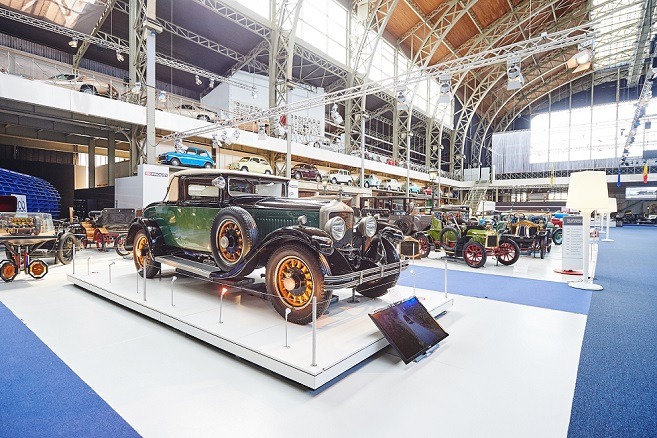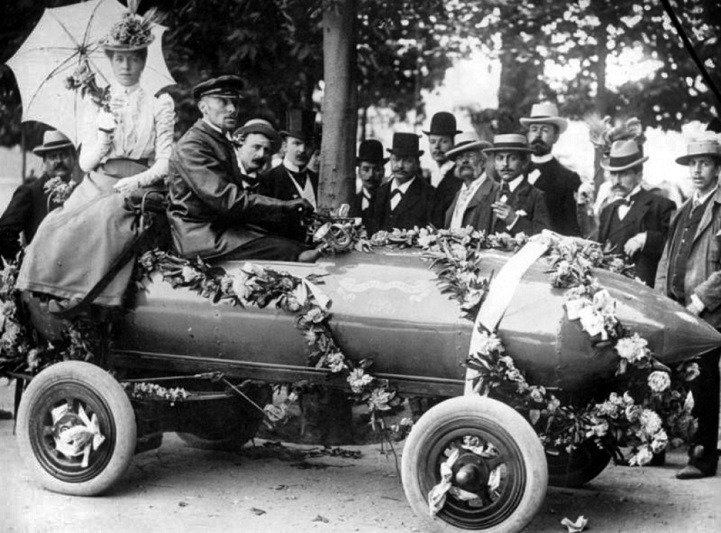When it comes to its automobile industry, Belgium has a particularly proud heritage. It was a Belgian, Father Ferdinand Verbiest, who in 1677 described the first steam-powered vehicle or what some claim to be the world's first automobile. Before the First World War, Belgium counted almost 200 different car manufacturers. Between 1900 and 1914 Belgium produced such renowned cars as the Minerva, Imperia, FN, Excelsior, Pipe, Germain, Nagant, and Métallurgiqu. Three-fourths of its production was exported throughout the world.
Today, of course, the situation has completely changed. Arguably, the nadir came in 2010 when the last ever Opel to be produced by General Motors’ Antwerp plant rolled off the production line. It signalled the end of 85 years of car production by GM in Antwerp. What used to be known as “Factory 1 site” is currently home to a multiplex cinema.
On 2 April 1925, the first CKD-Chevrolet rolled off the Antwerp assembly line. It was the heyday of Belgian car manufacturing, and the plant turned out up to 25 cars a day. By the end of 1925, 2,040 Belgian Chevrolets had been produced in Antwerp.
It is a similar story for Ford, that other famous US car brand, which first arrived in Belgium in the 1930s with cars first being assembled at Antwerp. By the 1960s, it had reached maximum capacity, so a new factory was built in Genk. Production there peaked in the 1990s.
In 1994, for example, the company produced over 470,000 Sierras and Mondeos at its Limburg site where it employed some 14,000 people.
But at the turn of the century, Ford, like GM, suffered as a result of overcapacity on the global car market. In December 2014, Ford closed the plant with the loss of 6,000 jobs either at the factory itself or one of its suppliers. While they were well compensated, it is estimated that more than 30 per cent of those that lost their jobs remain jobless.
As can be seen, Belgium’s car industry has had a checkered history. But there have been lots of good times, and many of these are superbly documented at a new permanent exhibition at the Autoworld Museum in Brussels. It is a fitting and rightful home for highlighting the country’s automotive heritage.
Called “Belgium at Autoworld”, the exhibition covers a wide range of facets: the origins, the inventors, the industrialists, the engineers, the craftsmen, the designers, the race courses, the race car drivers and the racing team. Everything that makes Belgium an exceptional country in the history of the automobile, both yesterday and today, is on display.
As Eric Janssen, head of museology points out, it showcases quite a few facts that few may remember, but which show just how important Belgium has been (and remains) in the car industry. At the end of the 19th century, Belgium was one of the greatest industrial powers in the world. And in the beginning of the 20th century the country was ranked number one in the world with regard to industry and automobiles.
One interesting fact: In 1900, the threshold speed of 100 km/h was surpassed by a Brussels designer, Camille Jenatzy, with an electric vehicle, the Jamais Contente. He actually broke the land speed record three times and was nicknamed Le Diable Rouge for the colour of his beard.

The original La Jamais Contente can be found in a car museum in the French castle “Château de Compiègne”. It was the first vehicle to reach 100 km/h. The record was set in 1900.
Every two months, Autoworld will display a historical or contemporary vehicle that is linked to Belgium. This could, for instance, be a car that had a Belgian designer, was driven by a Belgian race car driver or was produced in the country. To start with, three cars will be presented with colours that evoke the Belgian flag: a black Audi A1 from 2009, a yellow FN from 1920 and a red Volvo.
Twenty emblematic vehicles, including the Minerva, FN, Imperia, Belga Rice and Excelsior, lead the way to a pavilion where the visitor will discover thematic modules with all kinds of information, documents, display cases, books, objects, posters, miniatures and other automobilia.
Information on the present and future seeks to explain why the Belgian automotive sector still has good days ahead of it. The car industry in Belgium, like the rest of Europe, faces an uncertain future. Europe-wide, the sector employs 2.3 million workers directly and another 10 million indirectly and accounts for 20 per cent of industrial research funding.

Many vehicles from the almost 200 different car brands that Belgium manufactured during its peak in the early 20th century are on display in the museum “Autoworld” in Brussels.
Despite its ups and downs, the auto industry continues to play a major role in Belgium’s economy, with almost 265,000 employees in sectors that are linked to the production and assembly of vehicles, as well as in peripheral activities such as sales, rental, maintenance, sub-contracting (spare parts), fuels, transport, road construction and so on.
Bert Mons, director of Agoria Transport Systems and Solutions, a Belgian employers federation, says, “The future looks good even though the automotive sector is going through a transition. In recent years, the industry here has been future-proofing itself. The focus has shifted from assembly to the production of components with a high added value.”
In this sense, Belgium is an excellent choice: it has the knowhow, experience and logistics infrastructure. Experts also believe that the Belgian car industry is at a crossroads.
A source at the Belgian ministry of economy said, “Belgium is an attractive country for vehicle manufacturers. Not only does it have a proven track record of high productivity, it has the ports to enable rapid distribution and research centres to test parts and components and look into the potential of new technologies.”
But he added, “To remain a major economic sector, the industry will have to turn to high technology, for example, hybrid technology and new materials. With self-driving (autonomous) cars, a technological revolution is clearly underway in the car sector, but the Belgian auto industry may have to wait before it can reap the benefits of this trend.”
For now at least, the consensus is that Belgian car making still has plenty to offer. Autoworld is an appropriate place to showcase not only the country’s car legacy but also to shine a light on its future.
By Martin Banks

